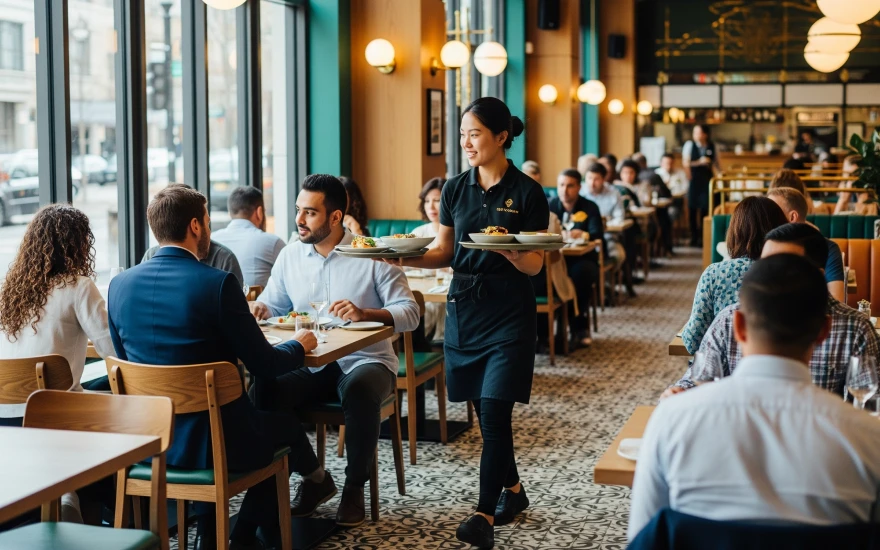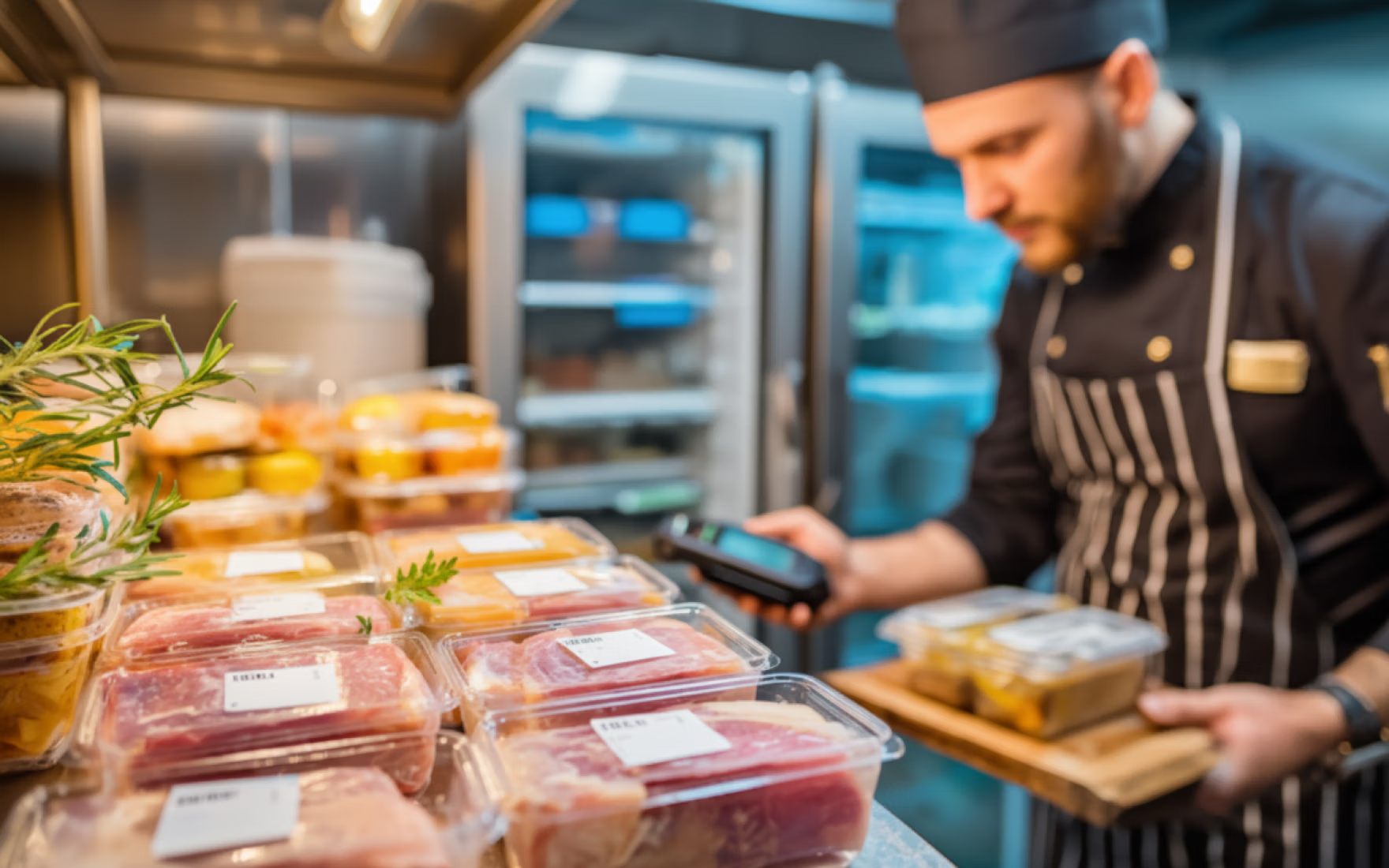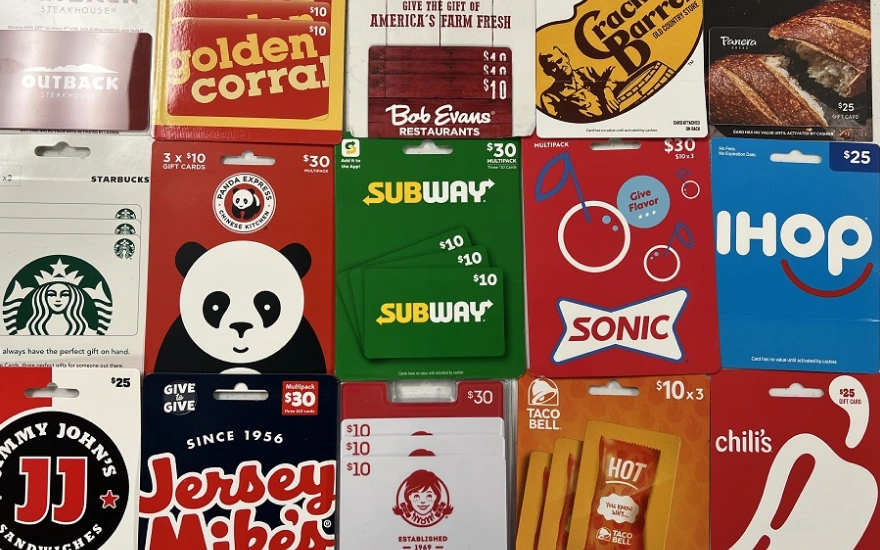How Can Restaurants Use Food Trends to Boost Business in 2025?

Food isn’t just fuel — it’s a driving force behind customer loyalty, profit margins, and operational strategy. As the restaurant industry heads into 2025, staying ahead of food trends is essential for attracting guests, managing costs, and maximizing team efficiency. The eating habits of today’s diners are changing fast, shaped by health concerns, sustainability values, global influences, and social media tastes.
The 2025 food trends in the restaurant industry are more than passing fads — they’re strategic opportunities. From functional foods like turmeric lattes to trending Gen Z plates like sushi burritos and “girl dinners,” these innovations can help restaurant operators delight guests while improving their bottom line. This article explores the most influential food trends of 2025 and how savvy restaurants can translate them into operational wins.
Why Do 2025 Food Trends in the Restaurant Industry Matter?
The restaurant industry is evolving under pressure from changing diner expectations, fierce competition, and rising costs. Staying relevant in 2025 means more than adding trendy ingredients — it requires aligning menus, staffing plans, and sustainability efforts with customer demand.
Consumers care about both taste and transparency. Diners are actively looking for restaurants that align with their values, whether that’s reducing food waste, eating less meat, or enjoying global flavor mashups. According to resOS, this year’s food trends highlight health-conscious dining, environmental responsibility, and culinary fusion. The plant-based foods market alone is projected to hit $161.9 billion by 2030 (Statista), signaling a long-term shift, not a momentary craze.
2025's restaurant industry trends are not just culinary upgrades — they’re playbooks for profitability and operational sustainability.
What Are the Key 2025 Food Trends in the Restaurant Industry?
Every year introduces fresh ideas to the table, but 2025’s culinary landscape brings some defining shifts. According to resOS, the year's top trends revolve around health, sustainability, and global inspiration — all of which are shaping dining behavior and operational strategy.
Summary of Top Food Trends in 2025
- Reducetarianism: Flexitarian-style dining that reduces meat and dairy without eliminating them entirely.
- Culinary Upcycling and Zero-Waste Cooking: A focus on repurposing food scraps and using entire ingredients from root to stem or nose to tail.
- Healthy Indulgence: Balancing nutrient-dense foods with indulgent flavors, offering guests comfort without compromise.
- Functional Foods: Nutrient-boosting ingredients like kombucha, turmeric, and chia are finding footing in smoothies, snacks, and beverages.
- Flavor Fusion: Blending local and global culinary traditions — think Korean BBQ tacos or sushi pizza.
Together, these restaurant menu ideas for 2025 invite operators to rethink how food trends can not only spark interest but also improve workflows, margins, and mission-driven dining experiences.
How Can Restaurants Use Food Trends to Drive Customer Engagement?
Food trends help restaurants stay fresh in the eyes of guests — and relevance is key to keeping foot traffic high in a competitive market. Practical trend adoption does more than satisfy curiosity; it supports a restaurant's brand identity and operational efficiency.
Here’s how restaurants can use trends to drive engagement:
- Tap Into Regional Preferences: Use customer feedback, local events, and social listening to spot food trends gaining real interest nearby.
- Leverage Reservation and POS Data: Platforms like Push integrate with reservation and POS systems to better predict demand and scheduling needs based on trends, reservations, and weather.
- Turn Innovation Into Insight: Run limited-time offerings (LTOs) to test new food trends, then analyze data for what sticks.
Smart operators create a loop: implement food trends, analyze guest feedback, adjust offerings, and repeat — creating a responsive, data-driven approach that resonates with both new and returning guests.
What Is Reducetarianism and How Can It Help Your Menu Evolve?
Reducetarianism — the practice of intentionally reducing, but not eliminating, meat and dairy consumption — is gaining ground as a flexible, inclusive approach to healthy eating. Unlike veganism or vegetarianism, it invites diners to explore plant-based options without the pressure of a complete dietary shift.
According to resOS, it’s one of the fastest-growing restaurant industry trends in 2025. For operators, this opens the door to experimenting with plant-forward entrees that attract a broader audience.
Popular menu formats include:
- Mixed-protein bowls blending legumes and lean meats
- Plant-based burgers made from pea or lentil proteins
- Dairy-lite desserts using coconut, oat, or almond bases
Cost and Labor Benefits
Reducetarian menu items often rely on vegetables, legumes, and grains — ingredients that are typically more cost-effective than meat. These dishes usually require shorter cook times, improving back-of-house efficiency, especially during peak hours. When labor is tight, every streamlined process counts.
By easing into meat alternatives, restaurants can lower costs, satisfy diners, and reduce churn — all without polarizing their customer base.
How Can Culinary Upcycling and Zero-Waste Cooking Cut Costs?
In 2025, food waste is no longer just an environmental concern — it’s an operational red flag. Culinary upcycling and zero-waste cooking are two approaches that restaurants are using to both trim waste and tell a sustainability story diners care about.
Culinary Upcycling vs. Zero-Waste
- Culinary upcycling: Repurposing scraps into new, marketable dishes — think carrot-top pesto or citrus-peel scones.
- Zero-waste: Eliminating food waste by using all parts of an ingredient — root to stem, nose to tail.
Not only do these strategies reduce ordering volume and disposal costs, but they also elevate storytelling on the menu. Examples include:
- Broth made from animal bones and vegetable trimmings
- Citrus-peel syrups for mocktails
- Fried potato skins turned into appetizers
Eco-conscious diners are seeking out these practices, and resOS notes a clear shift in expectation — especially from eco-minded Millennials and Gen Z guests.
Staff Training for Waste Reduction
Upcycled menus often require new prep techniques. Investing in prep training empowers kitchen teams to execute sustainable recipes while enhancing their culinary skills. When chefs become sustainability storytellers, guests notice — and they return.
What Role Do Functional Foods Play in Menu Innovation?
Functional foods — ingredients that support physical health beyond basic nutrition — are becoming key players in menu design. From immune support to gut health, these nutrients align with today’s holistic wellness trends.
Popular functional ingredients in 2025 include:
- Probiotics: Found in kombucha or yogurt-based sauces
- Anti-inflammatories: Such as turmeric and ginger
- Omega-rich seeds: Like chia and flax
According to resOS, the global functional foods market is expected to grow to $38.5 billion by 2033. Restaurants that capitalize on this trend can offer:
- Breakfast smoothies with turmeric and chia
- Healthy desserts emphasizing whole ingredients
- Morning menus that combine wellness with flavor
Functional foods improve perceived menu value — a key advantage given diners’ growing interest in nutritional transparency.
What Is Hyper-Local Sourcing and Why Does It Matter More in 2025?
Hyper-local sourcing isn’t a trend — it’s a restaurant business strategy with longevity. This practice involves sourcing ingredients from local farmers, cooperatives, or community-supported agriculture (CSA) programs. In 2025, it's becoming a competitive differentiator.
Benefits of hyper-local sourcing include:
- Increased freshness and ingredient quality
- Support of the regional economy
- Reduced dependence on volatile global supply chains
- Lower carbon footprint and higher guest trust
How to Implement Hyper-Local Sourcing
- Building relationships with local farmers and suppliers
- Incorporating seasonal produce into rotating specials
- Calling out farms or purveyors directly on the menu
This not only deepens community ties — it builds menu transparency that today’s guests crave.
Which Fun & Creative Food Trends Are Capturing Gen Z Diners?
Gen Z craves food that’s flavorful, whimsical, and Instagram-worthy. In 2025, creative presentations and global mashups dominate. Restaurants must balance novelty with operational practicality.
Popular Gen Z dishes include:
- Fusion-focused items: Sushi burritos, Korean BBQ tacos, or taco pizza
- Spicy-sweet desserts: Like chili chocolate brownies or mango habanero cookies
- Snack plates: Inspired by the “girl dinner” trend — small, mix-and-match items that feel indulgent but not heavy
Social Media as a Trend Thermometer
Social platforms like TikTok and Instagram are unofficial test kitchens. Use these tools to track regional preferences and adapt offerings accordingly. With smart content tools, chefs can respond to trending flavors without overhauling menus — allowing for low-cost creativity with high guest visibility.
How Can Restaurants Track and Analyze Guest Preferences for Trend Adoption?
The success of food trend adoption relies on knowing what customers actually want. Modern restaurant tech makes guesswork obsolete.
By using reservation platforms, POS systems, and guest management tools, operators can:
- Track most-ordered dishes and preferred ingredients
- Monitor dietary preferences and allergen requests
- Forecast inventory needs based on past trend performance
These insights power personalized marketing campaigns and smarter ingredient purchasing. A data-backed approach ensures that your trend-forward offerings don’t just follow hype — they drive ROI.
How Can Push Operations Help Restaurants Turn Trends Into Revenue?
Implementing new trends often means changes to labor scheduling, training, and kitchen coordination. That’s where Push Operations becomes invaluable.
Push helps restaurants:
- Align labor with trend-driven traffic spikes (e.g., summer smoothie launches or seasonal produce specials)
- Adjust staff scheduling using predictive insights tied to trends, weather, and historical data
- Control labor costs and reduce overtime as demands shift
- Onboard new staff quickly when launching new dining concepts
Whether the back of house is prepping turmeric lattes or fermenting house-made kombucha, Push ensures kitchen teams are staffed, scheduled, and supported.
Conclusion: Turn 2025 Food Trends Into Strategic Wins
The 2025 food trends in the restaurant industry are more than flavor-forward features — they represent efficiencies, innovations, and values that today’s diners actively support. Trends like reducetarianism, zero-waste cooking, and hyper-local menus not only resonate with customers but also help operators control food costs, reduce kitchen complexity, and build brand loyalty.
Forward-thinking restaurant teams don’t wait to react — they plan, test, and use data to drive decisions. With tools like Push Operations, operators can align people management with culinary evolution. As the industry continues to shift, success will come to those who match menu creativity with measurable outcomes.
Ready to build a trend-savvy, efficient kitchen team? Learn how Push simplifies scheduling, payroll, and team management — so you can focus on what’s next for your menu. Book a demo with Push Operations today to get started!



